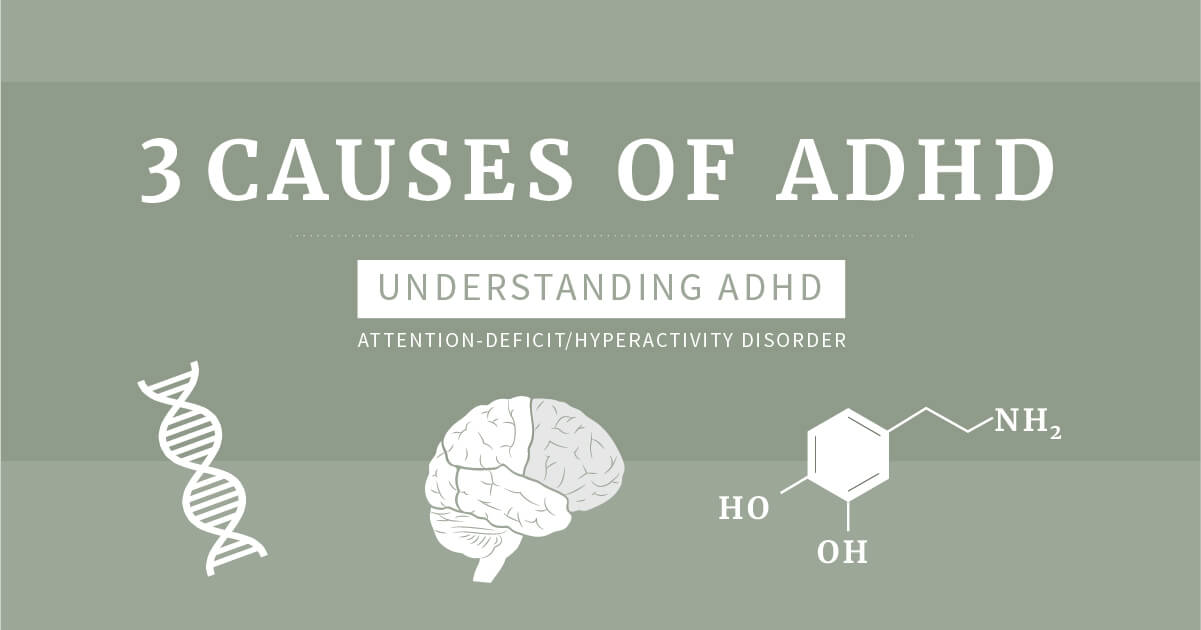What to do if you know someone is suicidal
Help Someone Else : Lifeline
If someone you know is struggling emotionally or having a hard time, you can be the difference in getting them the help they need. It’s important to take care of yourself when you are supporting someone through a difficult time, as this may stir up difficult emotions. If it does, please reach out for support yourself.
Do They Need Your Help?
Some warning signs may help you determine if a loved one is at risk for suicide, especially if the behavior is new, has increased, or seems related to a painful event, loss, or change. If you or someone you know exhibits any of these, seek help by calling the Lifeline.
- Talking about wanting to die or to kill themselves
- Looking for a way to kill themselves, like searching online or buying a gun
- Talking about feeling hopeless or having no reason to live
- Talking about feeling trapped or in unbearable pain
- Talking about being a burden to others
- Increasing the use of alcohol or drugs
- Acting anxious or agitated; behaving recklessly
- Sleeping too little or too much
- Withdrawing or isolating themselves
- Showing rage or talking about seeking revenge
- Extreme mood swings
How Can You Help Them?
It can be scary when a friend or loved one is thinking about suicide. It's hard to know how a suicidal crisis feels and how to act. Call 988 at any time for help if a friend is struggling.
Contact a Lifeline Center
Never keep it a secret if a friend tells you about a plan to hurt themselves. Call 988 so that you can find out what resources are available in your area, or encourage your loved one to call. Calls are routed to the Lifeline center closest to your area code that can provide you with local resources.
Use The Do's and Don'ts
Talking with and finding help for someone that may be suicidal can be difficult. Here are some tips that may help.
Be Aware Of Suicidal Feelings
People having a crisis sometimes perceive their dilemma as inescapable and feel an utter loss of control. These are some of the feelings and thoughts people experience in crisis. If you or a friend are feeling this way, call us anytime at 988.
Use the 5 Action Steps
These evidence-based action steps provide a blueprint for reaching and helping someone in crisis.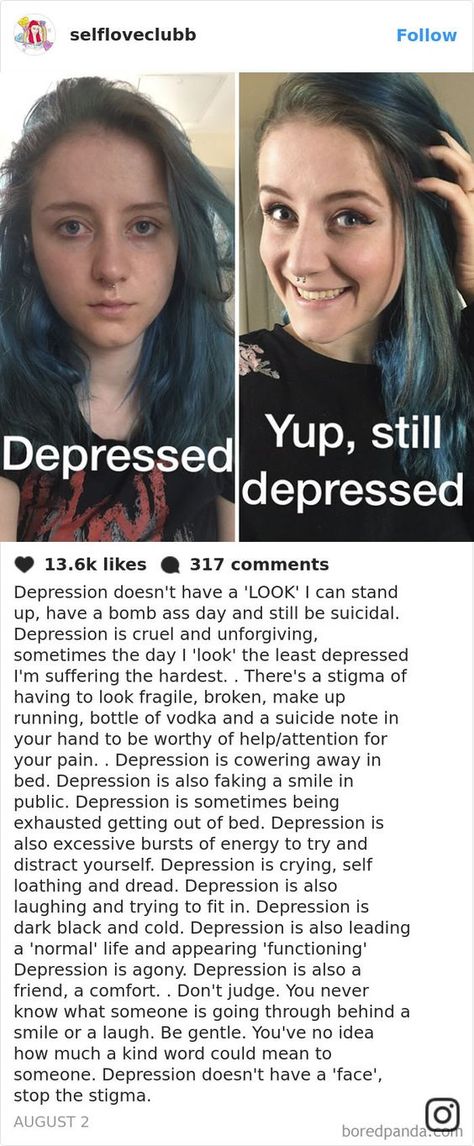
#BeThe1To
Practice Active Listening
Hearing someone talk is different from actively listening to what that person is saying. Active listening requires concentration and understanding. Improving your listening skills is easy to do with practice and these helpful tips.
Get More Info
The federal Substance Abuse and Mental Health Services Administration offers additional resources for multiple audiences.
Visit SAMHSA Online
Social Media Safety
Find ways to support people in crisis online, build guidelines for your digital community, and learn how to report someone in crisis on different social media platforms.
Get in touch
Call the Lifeline
How The 5 Steps Can Help Someone Who is Suicidal
En Español
The five action steps for communicating with someone who may be suicidal are supported by evidence in the field of suicide prevention.
Ask
How – Asking the question “Are you thinking about suicide?” communicates that you’re open to speaking about suicide in a non-judgmental and supportive way. Asking in this direct, unbiased manner, can open the door for effective dialogue about their emotional pain and can allow everyone involved to see what next steps need to be taken. Other questions you can ask include, “How do you hurt?” and “How can I help?” Do not ever promise to keep their thoughts of suicide a secret.
Asking in this direct, unbiased manner, can open the door for effective dialogue about their emotional pain and can allow everyone involved to see what next steps need to be taken. Other questions you can ask include, “How do you hurt?” and “How can I help?” Do not ever promise to keep their thoughts of suicide a secret.
The flip side of the “Ask” step is to “Listen.” Make sure you take their answers seriously and not to ignore them, especially if they indicate they are experiencing thoughts of suicide. Listening to their reasons for being in such emotional pain, as well as listening for any potential reasons they want to continue to stay alive, are both incredibly important when they are telling you what’s going on. Help them focus on their reasons for living and avoid trying to impose your reasons for them to stay alive.
Why – Studies show that asking at-risk individuals if they are suicidal does not increase suicides or suicidal thoughts.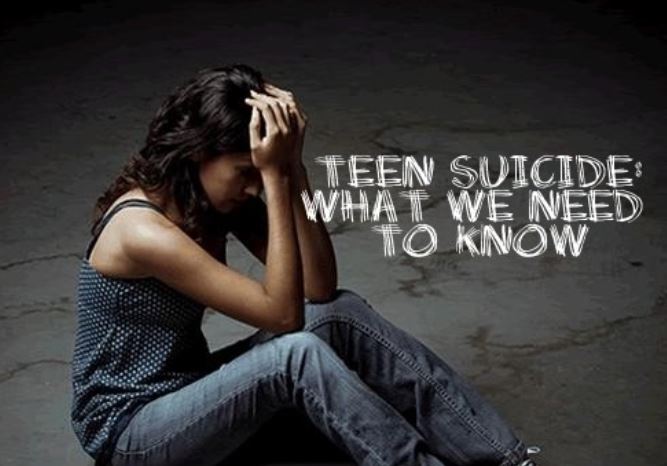 In fact, studies suggest the opposite: findings suggest acknowledging and talking about suicide may in fact reduce rather than increase suicidal ideation.
In fact, studies suggest the opposite: findings suggest acknowledging and talking about suicide may in fact reduce rather than increase suicidal ideation.
Be There
How – This could mean being physically present for someone, speaking with them on the phone when you can, or any other way that shows support for the person at risk. An important aspect of this step is to make sure you follow through with the ways in which you say you’ll be able to support the person – do not commit to anything you are not willing or able to accomplish. If you are unable to be physically present with someone with thoughts of suicide, talk with them to develop some ideas for others who might be able to help as well (again, only others who are willing, able, and appropriate to be there). Listening is again very important during this step – find out what and who they believe will be the most effective sources of help.
Why – Being there for someone with thoughts of suicide is life-saving. Increasing someone’s connectedness to others and limiting their isolation (both in the short and long-term) has shown to be a protective factor against suicide. Thomas Joiner’s Interpersonal-Psychological Theory of Suicide highlights connectedness as one of its main components – specifically, a low sense of belonging. When someone experiences this state, paired with perceived burdonsomeness (arguably tied to “connectedness” through isolating behaviors and lack of a sense of purpose) and acquired capability (a lowered fear of death and habituated experiences of violence), their risk can become severely elevated.
In the Three-Step Theory (or more commonly known as the Ideation-to-Action Framework), David Klonsky and Alexis May also theorize that “connectedness” is a key protective factor, not only against suicide as a whole, but in terms of the escalation of thoughts of suicide to action. Their research has also shown connectedness acts as a buffer against hopelessness and psychological pain.
Their research has also shown connectedness acts as a buffer against hopelessness and psychological pain.
By “being there,” we have a chance to alleviate or eliminate some of these significant factors.
Help Keep Them Safe
How – First of all, it’s good for everyone to be on the same page. After the “Ask” step, and you’ve determined suicide is indeed being talked about, it’s important to find out a few things to establish immediate safety. Have they already done anything to try to kill themselves before talking with you? Does the person experiencing thoughts of suicide know how they would kill themselves? Do they have a specific, detailed plan? What’s the timing for their plan? What sort of access do they have to their planned method?
Why – Knowing the answers to each of these questions can tell us a lot about the imminence and severity of danger the person is in. For instance, the more steps and pieces of a plan that are in place, the higher their severity of risk and their capability to enact their plan might be. Or if they have immediate access to a firearm and are very serious about attempting suicide, then extra steps (like calling for emergency help or driving them to an emergency department) might be necessary. The Lifeline can always act as a resource during these moments as well if you aren’t entirely sure what to do next.
Or if they have immediate access to a firearm and are very serious about attempting suicide, then extra steps (like calling for emergency help or driving them to an emergency department) might be necessary. The Lifeline can always act as a resource during these moments as well if you aren’t entirely sure what to do next.
The Harvard T.H. Chan School of Public Health notes that reducing a suicidal person’s access to highly lethal means (or chosen method for a suicide attempt) is an important part of suicide prevention. A number of studies have indicated that when lethal means are made less available or less deadly, suicide rates by that method decline, and frequently suicide rates overall decline. Research also shows that “method substitution” or choosing an alternate method when the original method is restricted, frequently does not happen. The myth “If someone really wants to kill themselves, they’ll find a way to do it” often does not hold true if appropriate safety measures are put into place. The Help Keep Them Safe step is really about showing support for someone during the times when they have thoughts of suicide by putting time and distance between the person and their chosen method, especially methods that have shown higher lethality (like firearms and medications).
The Help Keep Them Safe step is really about showing support for someone during the times when they have thoughts of suicide by putting time and distance between the person and their chosen method, especially methods that have shown higher lethality (like firearms and medications).
Help Them Connect
How – Helping someone with thoughts of suicide connect with ongoing supports (like the 988 Lifeline) can help them establish a safety net for those moments they find themselves in a crisis. Additional components of a safety net might be connecting them with supports and resources in their communities. Explore some of these possible supports with them – are they currently seeing a mental health professional? Have they in the past? Is this an option for them currently? Are there other mental health resources in the community that can effectively help?
One way to start helping them find ways to connect is to work with them to develop a safety plan. This can include ways for them identify if they start to experience significant, severe thoughts of suicide along with what to do in those crisis moments. A safety plan can also include a list of individuals to contact when a crisis occurs.
This can include ways for them identify if they start to experience significant, severe thoughts of suicide along with what to do in those crisis moments. A safety plan can also include a list of individuals to contact when a crisis occurs.
Why – Impact of Applied Suicide Intervention Skills Training on the National Suicide Prevention Lifeline found that individuals that called the National Suicide Prevention Lifeline were significantly more likely to feel less depressed, less suicidal, less overwhelmed, and more hopeful by the end of calls handled by Applied Suicide Intervention Skills Training-trained counselors. These improvements were linked to ASIST-related counselor interventions, including listening without judgment, exploring reasons for living and creating a network of support.
Follow Up
How – After your initial contact with a person experiencing thoughts of suicide, and after you’ve connected them with the immediate support systems they need, make sure to follow-up with them to see how they’re doing. Leave a message, send a text, or give them a call. The follow-up step is a great time to check in with them to see if there is more you are capable of helping with or if there are things you’ve said you would do and haven’t yet had the chance to get done for the person.
Leave a message, send a text, or give them a call. The follow-up step is a great time to check in with them to see if there is more you are capable of helping with or if there are things you’ve said you would do and haven’t yet had the chance to get done for the person.
Why – This type of contact can continue to increase their feelings of connectedness and share your ongoing support. There is evidence that even a simple form of reaching out, like sending a caring postcard, can potentially reduce their risk for suicide.
Studies have shown a reduction in the number of deaths by suicide when following up was involved with high risk populations after they were discharge from acute care services. Studies have also shown that brief, low cost intervention and supportive, ongoing contact may be an important part of suicide prevention. Please visit our Follow-Up Matters page for more.
Please visit our Follow-Up Matters page for more.
Share the #BeThe1To steps in your community. Find out how.
For more information, press/media inquiries, or partnership opportunities, please contact Hannah Collins at [email protected].
Suicide: triggers in your body
- David Robson
- BBC Future
Image copyright Getty
The recent death of actor Robin Williams has raised the issue of suicide again. As the correspondent found out BBC Future , scientists are looking for new ways to identify people at risk of self-destruction. Perhaps approaching suicide as a curable disease could open the way for better targeted treatments for would-be suicides.
In hindsight, after the tragedy, it is easy to discover the hidden meaning in the words of the deceased actor during his lifetime.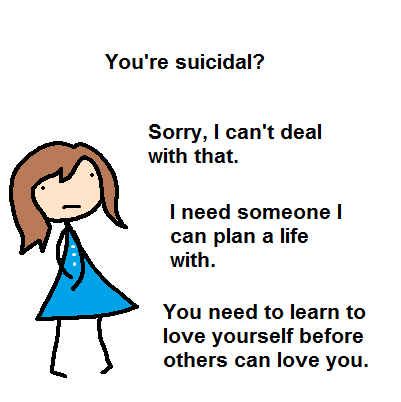 In an interview in 2006, Robin Williams spoke openly about the mood swings he experienced. "Do I sometimes play like I'm manic? No. Am I constantly manic? No. Do I sometimes feel deep sadness? Oh yes. Do I suffer from this? Oh yes!"
In an interview in 2006, Robin Williams spoke openly about the mood swings he experienced. "Do I sometimes play like I'm manic? No. Am I constantly manic? No. Do I sometimes feel deep sadness? Oh yes. Do I suffer from this? Oh yes!"
He did not say that he was clinically diagnosed with any particular disorder, but his agent confirmed that Williams had been battling depression in the months leading up to his death.
Many of those who have commended the late actor for his warmth and comic genius have noted that his death has once again drawn attention to the various prejudices and labels that abound in common misconceptions about mental health.
NBC News aired a thoughtful story about the terrible stigma that the word of mouth puts on the "silent epidemic" and those who overtake it.
The issue of suicide is rarely discussed publicly, although suicide is becoming an increasingly serious problem. In the United States, the number of suicides has exceeded deaths from car accidents.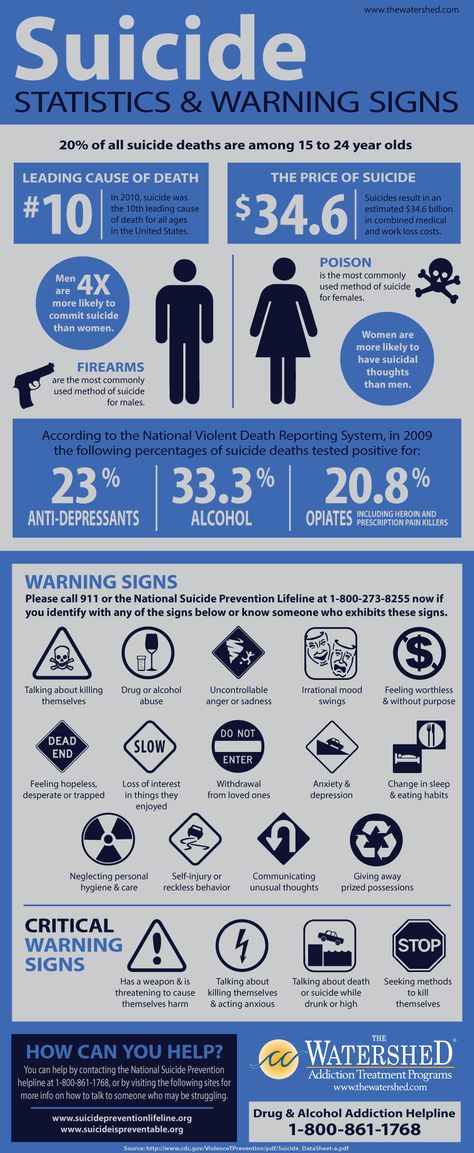
And even when all the taboos seem to have been lifted, we still have a long way to go before we begin to treat suicidal feelings in the same way as other illnesses.
Antidepressant medications and cognitive behavioral therapy seem to be able to alleviate the burden of suicidal thoughts for many people suffering from depression, but they may not be the perfect cure for every patient.
Until now, soul-searching has usually been about why some people respond to treatment and others don't. However, new research still allows at least a little light to be shed on this dark side of the human mind.
Become aware of yourself
There is now, for example, a growing acceptance of the idea that the word "depression", which we use to designate the disease in question, is an umbrella term applied to many different problems that have different biological origins. In particular, a suicide attempt may be preceded by a chain of neurological changes that are not seen in people suffering from other types of depression.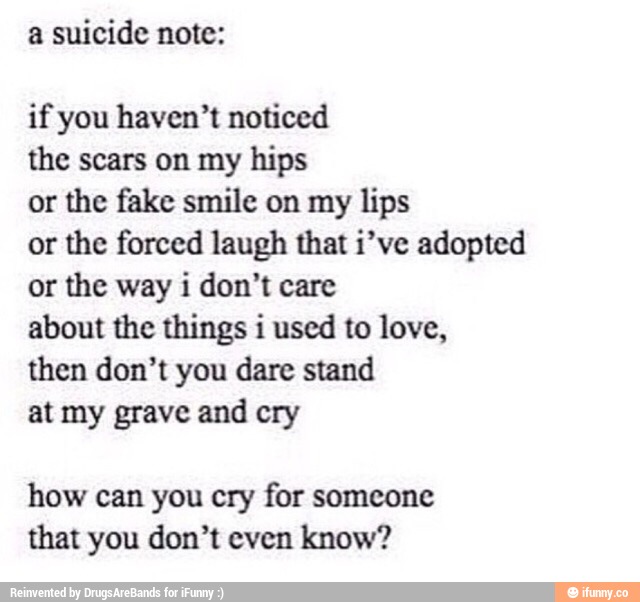
Image copyright Getty
Image caption,Artist Catharine Dawson created "My Soul" based on her own brain scans
Skip the Podcast and continue reading.
Podcast
What was that?
We quickly, simply and clearly explain what happened, why it's important and what's next.
episodes
End of Story Podcast
For example, patients who have attempted suicide have less white matter, ie. nerve fibers that transmit information to the mediodorsal nucleus of the thalamus of the prefrontal (frontal) cerebral cortex. This part of the brain is located where the hairline on the forehead passes. It is difficult to overestimate the significance of this, since our self-awareness depends on the volume of white matter.
People who try to kill themselves seem to be trapped in a ruminative (obsessive, repetitive), negative way of thinking and constant self-criticism. The authors of the study tried to find out whether neurological changes can lead to a destructive way of thinking that blinds people so much and deprives them of hope for the future that they no longer realize the value of their own personality.
The authors of the study tried to find out whether neurological changes can lead to a destructive way of thinking that blinds people so much and deprives them of hope for the future that they no longer realize the value of their own personality.
People who harbor suicidal thoughts seem to have weakened neural connections in the frontal lobes of the brain, which are responsible for emotional control and inhibition of psychological reactions and behavior. It can again be noted that the consequences of violations are purely hypothetical, but suicide is considered an impulsive act.
Image copyright, Getty
Image caption,Sometimes people resort to suicide out of shame and despair: in the picture, a Roman general commits suicide after losing a battle to the Germans
sudden onset of a passion for self-destruction. Moreover, as a result of these changes, the brain cells themselves dry out or die in other parts of the brain, which can lead to a violation of a person's ability to solve problems and make decisions. Cognitive problems are a common feature found in people who have attempted suicide.
Cognitive problems are a common feature found in people who have attempted suicide. It is not yet clear what triggers these anatomical changes and whether they may be the root cause of the urge to commit suicide. It is possible that this is nothing more than a side effect of the repressed, depressive feelings that the patient is already experiencing. Most likely, psychological symptoms, as well as changes in the neural connections of the brain, are a manifestation of complex interactions between our genes and the circumstances of our lives.
Once we have disassembled the mechanism of specific causal relationships, the resulting new understanding of these processes may ultimately change the way we treat people with depression.
And first of all, it will help to determine who exactly is at the greatest risk of suicidal tendencies. Many suicidal patients are not ready to tell anyone, even their own doctors, about their dark feelings.
Image copyright, Thinkstock
Image caption,It's not always possible to get complete information about a patient's condition from a conversation with them
However, brain scans can reveal these characteristic changes, which allow doctors to look at the problem literally from the inside, which gives them information that they cannot obtain as a result of a conversation with a patient.
Because neuronal degeneration, including neuronal death, has certain chemical markers, some scientists have speculated that one day, blood tests will help detect early warning signs of a possible suicide attempt. Preliminary studies of this method have shown positive results, but much more extensive testing will be required before such assays can be used in clinical practice.
Once the specific needs of the patient have been identified, it will be possible to develop an individual treatment method that would correspond to a particular type of depression. Doses of lithium, for example, appear to help regenerate the gray matter of a damaged area in the brain of a suicidal person.
Research has shown that lithium medications actually reduce the risk of re-suicide when given to people with bipolar disorder who have already attempted suicide once. Other medicines may have similar effects.
New Opportunities
Kees van Heeringen, Head of Suicide Research at the University of Ghent in Belgium, suggested that non-invasive brain stimulation modalities, not yet commercialized, such as transcranial magnetic stimulation (TMS), might also be of interest to scientists.
With the help of a magnet acting on the scalp, TMS can increase or decrease the electrical impulse activity of certain parts of the brain, which sometimes produces a long-term effect. This method has already brought relief to people who suffered from other types of depression and resisted treatment. The TMS method has the potential to target the damaged parts of the brain of people with suicidal tendencies and make it possible to stop their destructive impulses.
A more advanced understanding of the changes that affect the brain and their effect on the individual's thinking will provide an opportunity to hone the techniques of talking psychotherapy. Thus, it is possible to identify those thought processes that have experienced the most destructive impact of depressive states, van Heeringen believes.
Image copyright Thinkstock
Image captionIf you know someone who feels suicidal, seek immediate medical attention
It is unlikely that any one treatment will ever be a panacea for people and suicidal depression.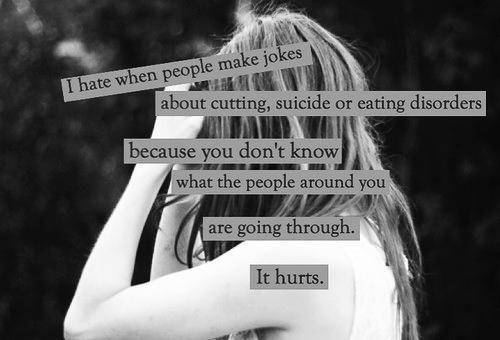 On the contrary, the effectiveness of the new approach lies in the variety of methods. In what was once shrouded in darkness, neurologists and psychiatrists now began to see a whole kaleidoscope of new possibilities. By adapting these possibilities to the specific circumstances of each patient's life, countless human lives can be saved.
On the contrary, the effectiveness of the new approach lies in the variety of methods. In what was once shrouded in darkness, neurologists and psychiatrists now began to see a whole kaleidoscope of new possibilities. By adapting these possibilities to the specific circumstances of each patient's life, countless human lives can be saved.
If you yourself feel suicidal, or know someone who feels the same way, the only advice is to seek medical help as soon as possible.
Warning. The content of this article is for general educational purposes only and should not replace the professional advice of a physician. The BBC is not responsible for a diagnosis made by a reader based on the content of this article. The BBC is not responsible for the content of other linked websites and does not endorse any commercial products or services referred to on those sites. Always consult your doctor if you are concerned about your health.
Read the original of this article in English is available on the website BBC Future .
How to recognize signs of suicide? | GAUZ TO "City Polyclinic No. 3"
Attention should be paid to those friends and acquaintances who suddenly begin to behave strangely, unusually. Most suicidal people seem to put up “warning signs” in front of them. These signs are their cry for help.
Threat to commit suicide. As a rule, suicidal teenagers directly or indirectly let their friends and relatives know that they are going to die. You can’t rethink a direct threat; it doesn’t lend itself to various interpretations. “I'm going to commit suicide”, “I won't be alive next Monday”... Direct threats, even if they feel strained, should be taken extremely seriously. Sharing with you thoughts about suicide for the sake of a “red word” or for the purpose of a joke is unlikely to come to anyone's mind.
Indirect threats, meaningful hints are harder to catch. "Life won't get worse without me" or "Sometimes you want to end it all once and for all" or "God, how tired of living!" Indirect threats are not easy to isolate from a conversation, sometimes they can be mistaken for the most ordinary "complaints about life" that are common to all of us when we are irritated, tired or depressed.
Direct and indirect threats should be treated very carefully, although indirect threats can be difficult to recognize. Fortunately, the "warning signs" are not limited to threats.
Verbal warnings.
- "I decided to commit suicide."
- "Tired". How can! Fed up with!"
- "Better to die!"
- "Live - and that's enough!"
- "I hate my life."
- "I hate everyone and everything!"
- "The only way out is to die!"
- "I can't take it anymore!"
- "You won't see me again!"
- "Do you believe in the transmigration of souls? Someday, maybe I will return to this world!”
- "If we don't see each other again, thank you for everything."
- "I'm leaving the game. Tired!”
Abrupt changes in behavior. When people suddenly start behaving unusually, this is a sure sign that something is wrong with them. Remember: we behave depending on what we feel at the moment. Potential suicides are usually sad, pensive, or agitated, embittered, often self-hating. in the behavior and appearance of those who hatch plans for suicide, their negative emotions are manifested. Pay attention to the change in the behavior of your relatives and acquaintances in the following ways.
Potential suicides are usually sad, pensive, or agitated, embittered, often self-hating. in the behavior and appearance of those who hatch plans for suicide, their negative emotions are manifested. Pay attention to the change in the behavior of your relatives and acquaintances in the following ways.
- Power supply . Adolescents with a good appetite become picky, while those who have always had a poor or unimportant appetite eat "three throats". Accordingly, thin teenagers get fat, and well-fed, on the contrary, lose weight. Anorexia and bulimia are latent suicide.
- Sleep. Most suicidal adolescents sleep all day; some, on the contrary, lose sleep and turn into “owls”: they walk up and down their room until late, some go to bed only in the morning, awake for no apparent reason.
- School . Many students who used to get "good" and "excellent" grades begin to play truant, their academic performance drops sharply. Those who used to be lagging behind are now often expelled from school.
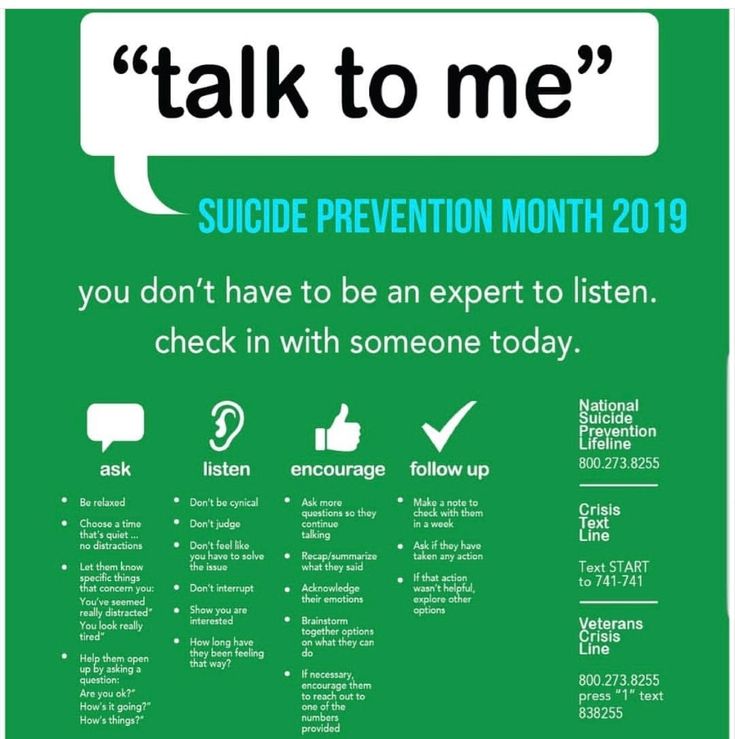
- Appearance. There are cases when suicidal teenagers stop watching their appearance. They do not comb their hair, dress sloppily, and even stop taking showers in the morning. Teenagers in crisis are untidy, they walk around in rumpled and dirty clothes, and they seem to be completely indifferent to what impression they make.
- Activity. Adolescents who are going through a crisis lose interest in everything they used to love. Athletes leave their teams, musicians stop playing their musical instruments, those who jogged every morning cool off for this activity. Many stop seeing friends, avoid old companies, keep apart.
- Desire for solitude . Suicidal teenagers often withdraw into themselves, avoid others, become isolated, and do not leave their rooms for a long time. They turn on the music and turn off from life. Sometimes they try to leave unnoticed so that none of those present will pay attention to their absence. Sometimes they behave as if life is sick of them, and with all their appearance they make it clear that they are tired of everything and everything.

- Distribution of valuables . People about to die often give away things that mean a lot to them. You need to be on the lookout if a person says phrases like these: “I won’t need this thing anymore” or “I want you to have something left of me as a keepsake.”
- Putting things in order . Some suicidal teenagers will give away their favorite things, others will find it necessary to “put their affairs in order” before they die. Some will rush to clean the house, others will rush to pay off their debts, sit down to write a letter that they should have answered a long time ago, or they will want to return an item taken from a friend, wash the floor in a room, dismantle a bureau or a desk. There is nothing suspicious in all these actions; on the contrary, in itself each of them is perfectly normal and natural. However, in combination with other "warning signs", this behavior may indicate the implementation of a suicidal plan.
Bereavement. The death of relatives: parents or brothers and sisters can push adolescents to thoughts of suicide. After such a loss, the life of a teenager changes in the most decisive way, now he has to not only come to terms with the loss of a loved one, but also close the gap that this loss has made in his life. Some teenagers cannot even imagine how they will live without a father or mother, brother or sister.
The death of relatives: parents or brothers and sisters can push adolescents to thoughts of suicide. After such a loss, the life of a teenager changes in the most decisive way, now he has to not only come to terms with the loss of a loved one, but also close the gap that this loss has made in his life. Some teenagers cannot even imagine how they will live without a father or mother, brother or sister.
The losses suffered by adolescents are not limited to the death of loved ones. Some teenagers start contemplating suicide after a fight with a girlfriend or after their parents divorced.
Sometimes young people do not want to live anymore if they have suffered a serious illness or if they have an accident that disfigures them.
Everyone bears the loss in their own way. A loss that may seem insignificant to one may become (or seem) irreparable to another. Changing his whole subsequent life, such a loss can push him to suicide.
Aggression, rebellion and defiance . Adolescents who want to end their lives are often hurt and embittered: they are angry with parents, teachers or friends who did not please them in some way, offended them, did not live up to their expectations. Sometimes they are angry with themselves, and their anger manifests itself in aggression, rebellion and defiance. Like any change in mood, such "explosions" should be alarming. People around, as a rule, do not want to deal with an irritated, quick-tempered, unpredictable person. As a result, just those people who could, if necessary, provide real help to him, turn away from the problem teenager. A person who is in social isolation is in danger of falling into the zone of suicidal risk.
Adolescents who want to end their lives are often hurt and embittered: they are angry with parents, teachers or friends who did not please them in some way, offended them, did not live up to their expectations. Sometimes they are angry with themselves, and their anger manifests itself in aggression, rebellion and defiance. Like any change in mood, such "explosions" should be alarming. People around, as a rule, do not want to deal with an irritated, quick-tempered, unpredictable person. As a result, just those people who could, if necessary, provide real help to him, turn away from the problem teenager. A person who is in social isolation is in danger of falling into the zone of suicidal risk.
Self-destructive and risky behavior. Some suicidal adolescents constantly seek to harm themselves, behave "on the verge of risk." They are carried headlong by cars, bicycles and motorcycles. No matter where they are - at busy intersections, on a winding mountain road, on a narrow bridge or on railway tracks - they drive everywhere at the limit of speed and risk. Some even carry firearms and, pretending to be dashing gangsters, carelessly brandish a pistol, point the muzzle at their foreheads, declare that they are “joking” - and demonstrate feigned composure.
Some even carry firearms and, pretending to be dashing gangsters, carelessly brandish a pistol, point the muzzle at their foreheads, declare that they are “joking” - and demonstrate feigned composure.
Some young people at risk of suicide stop taking care of their health. They may begin to smoke and drink heavily or use drugs, or combine drugs with alcohol.
Loss of self-esteem . There are days when any teenager feels like the ugliest, clumsiest, and stupidest creature in the world. However, such "self-flagellation" usually does not last long. Some pleasant surprise happens, and self-flagellation is replaced by self-praise, everything falls into place. As a rule, young people have enough self-esteem and self-confidence, which allows them to survive the hard times and mood swings that they are so prone to.
Teenagers who have lost their self-respect are quite another matter. Young people with low self-esteem or who treat themselves without any respect at all consider themselves worthless, unnecessary and unloved.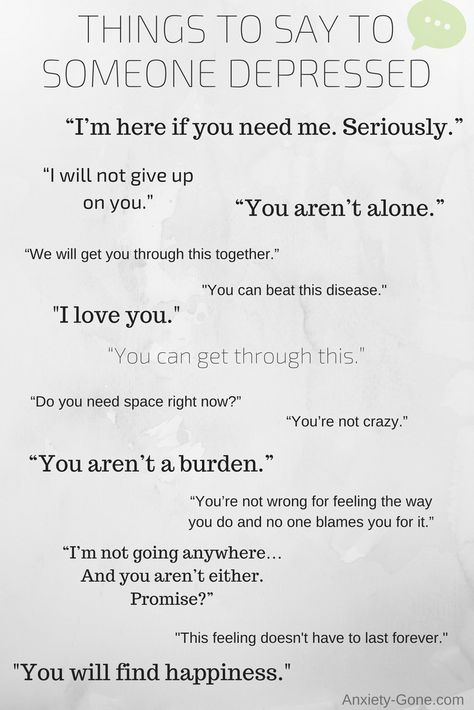 They feel like they're outsiders and losers, that they're failing, and that no one likes them. In this case, they may have the idea that it would be better if they died.
They feel like they're outsiders and losers, that they're failing, and that no one likes them. In this case, they may have the idea that it would be better if they died.
Risk groups.
Depression and the desire to commit suicide are not the same thing. You can suffer from depression, but do not even think about suicide. At the same time, the majority of suicidal adolescents are united by a tendency to depression. Depression is usually preceded by a feeling of sadness, often unconscious, and hopelessness.
Almost all young people experience depression and melancholy from time to time. Mood swings are characteristic of young people, but these swings continue for a day or two, no more. The so-called situational depression is directly related to what happened or is happening in the life of a teenager: young men and women react vividly to bad grades, to quarrels with friends and girlfriends, to family troubles, to loss of work. Adolescents who face not one, but several problems at the same time, fall into depression, triple the ability to find a way out of the situation.
Depression can lead young people to commit suicide because depressed teenagers often think that their misery will never end. It seems to them that they have fallen into a streak of bad luck, that “it will only get worse” and that there is no way out of this situation and cannot be. They imagine that the life they lead now will continue forever. The way out of this state of hopelessness can be suicide.
Depressed teenagers lose interest in life, in the people who surround them. They stop communicating with friends, stop doing what they used to do with interest. They look sad, depressed, they sleep a lot, they usually talk in a quiet, tired voice. The impression is that they live through force. They are involved in a vicious circle: depression leads to alienation, alienation breeds melancholy, melancholy - a new round of depression. And the longer this cycle lasts, the greater the risk that a teenager, trying to end melancholy and loneliness, will end his life.
Alcoholism and drug addiction .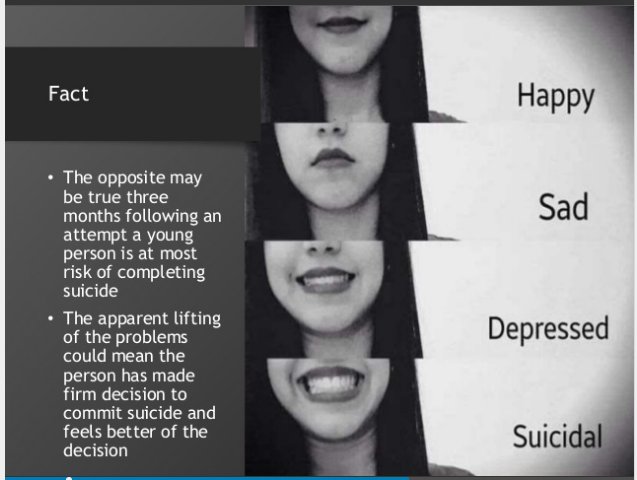 There are three ways in which alcohol and drugs affect a "depressed" teenager:
There are three ways in which alcohol and drugs affect a "depressed" teenager:
1. If a teenager does not drink or use drugs in principle, but is depressed and contemplating suicide, drinking and drugs can cloud his mind and push him to suicide .
2. If a teenager is a drinker and drug addict, drinking and drugs can make him depressed and suicidal.
3. If the parents of a teenager are alcoholics and drug addicts, then family scandals and troubles caused by this circumstance can significantly affect the psyche of a teenager, bring him close to the suicidal line.
Approximately one third of teens who commit suicide are under the influence of alcohol or drugs. Most often, a teenager does not use drugs, but drinks - usually beer: it is cheaper and more accessible.
Most young people who commit suicide under the influence of alcohol or drugs are not really drug addicts or alcoholics, they are just very ill. Alcohol and drugs cloud the mind, deprive teenagers of the opportunity to think “with a cool head”.
They are already depressed - under the influence of alcohol and drugs, suicide may seem to them the only way to stop the mental pain. As a result, they develop courage and are more risk-averse than when sober.
Drugs and alcohol have a detrimental effect on the lives of those teenagers whose parents are alcoholics and drug addicts. By themselves, young people may not be addicted to drugs and alcohol, but their lives are full of suffering due to the fact that the family breaks up.
Gifted teenagers . It's hard to believe that your smart, talented friends can run into problems that will make them attempt to die. The thing is that gifted teenagers are faced with the need to demonstrate their superiority in all areas of life, which, naturally, imposes considerable obligations on them. It begins to seem to many of them that they do not love them, but the awards, prizes and honors that they receive, the abilities that they are endowed with by nature. Therefore, as soon as they get just one bad mark, take not first, but second place in a sports competition, or somehow “prove” that their talents are exaggerated, they become depressed, they begin to feel that they have let everyone down, including themselves. Feelings of shame and guilt over the “failure” that has befallen may push them to think about suicide.
Feelings of shame and guilt over the “failure” that has befallen may push them to think about suicide.
Adolescents gifted in one area or another are often overly meticulous, petty; each step they carefully verify, think over; it seems to them that any decision they make should be the only possible one, that there is no other way but the one chosen by them. It is difficult for them - and even impossible - to imagine that they were mistaken in their calculations and that they should choose a different path.
Teenagers with poor school performance. Adolescents who find it difficult to learn and therefore perform poorly often suffer from low self-esteem and, as a result, become depressed. Both of these can lead to suicide.
Such students may be among your friends. Maybe they even complained to you about their lack of ability. In fact, this is not a defect, but a discrepancy: for the education of such students, other methods are needed that would enable them to finish school and get a profession.
Because these students face particular challenges in the classroom, they are under increased stress. Their self-esteem is constantly undermined by the caustic remarks of their classmates and teachers, which can make them feel like they are stupid and will never achieve anything.
Everyone wants to be loved by teachers and classmates – the lack of such love can become a heavy burden, which a teenager can get rid of only by resorting to desperate measures.
Pregnancy. Teenagers are becoming more and more sexually active every year, and these sexually active teenagers are not using contraceptives. which is why there is nothing surprising in the fact that girls in our time become pregnant at an earlier and earlier age. Many of them - if they suspect or be convinced that they are pregnant - are horrified and panicked.
Most of them are afraid of parental anger. Some people care what they say to teachers and friends. Including the boys who looked after them.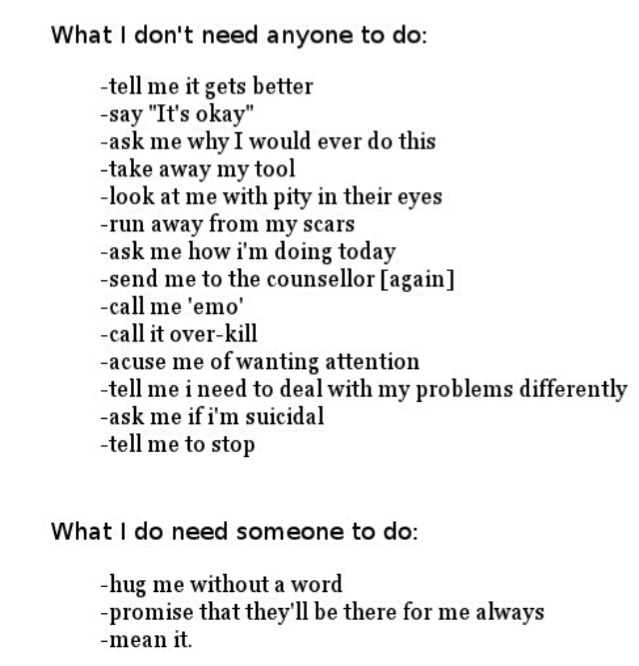 Now they are likely to leave them, yes or no? How will pregnancy affect their plans?
Now they are likely to leave them, yes or no? How will pregnancy affect their plans?
The decisions they have to make in connection with pregnancy (to keep or not to keep the baby? And if so, who will take care of it?) are also very ambiguous. It may turn out that the girl does not know what to do. She will be afraid that her parents or her friend will force her to make a choice that seems to her undesirable.
Pregnancy is an unsolvable problem for many girls. They understand that pregnancy is not something you can hide, and they believe that their relationship with their parents and friends will be ruined forever. It seems to them that life has not worked out, which means that death is the only thing left for them.
Adolescent victims of violence . Until your boyfriend or girlfriend admits to you that they have been physically, emotionally or sexually hurt at school, at home, or elsewhere, you are likely to be completely unaware of what happened. However, some evidence will give you reason to suspect that your friend or girlfriend has been the victim of abuse.
Low self-esteem, as well as rough verbal altercations between your friend and his parents, will serve as clear evidence of emotional trauma. However, young people who have been emotionally traumatized usually act timidly, shyly, as if afraid to draw attention to themselves. They have been taught to think that they are incapable of anything, stupid and ignorant. Often, therefore, they lack self-confidence, every word in their defense is given to them with incredible difficulty.
Sexual trauma is especially difficult to track down, as the herb is usually kept under wraps. Infliction of sexual trauma frightens young people, they lose ground under their feet, feel shame and a sense of disgust. Many teenagers try to keep such a trauma a secret, because they are afraid that no one will believe them. They are also afraid that the rapist would not deal with them or with members of their family.
As a result of violence, young people fall into a suicidal zone, because they see no other way out than death.






